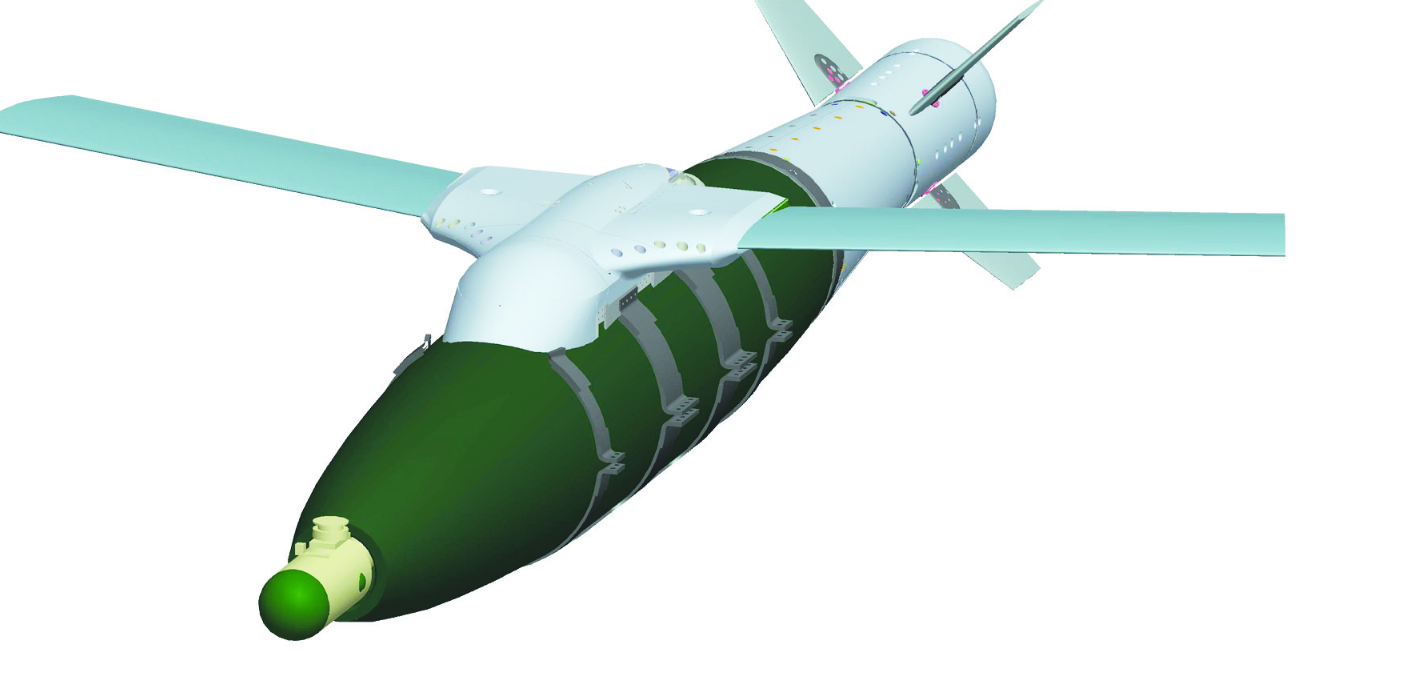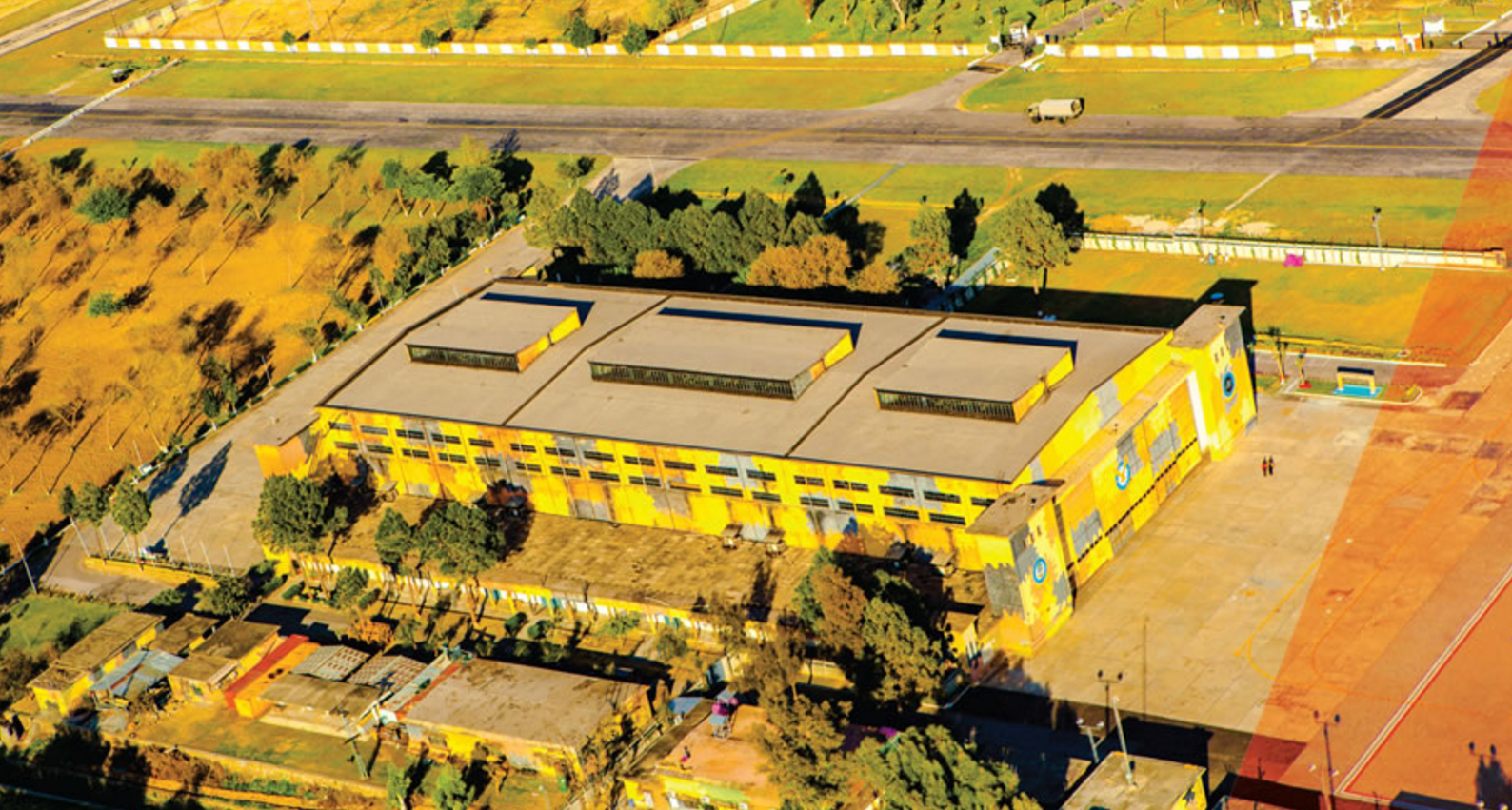3041Views 5Comments

Pakistan’s Force Multipliers (Part 2): Precision-guided bombs
Achieving conventional parity with India – especially in terms procuring complete high-tech solutions such as top-tier multi-role fighter aircraft (among other things) – is not currently achievable for Pakistan.
The reasons of this were discussed in a number of earlier articles on Quwa, but in summary, Pakistan lacks the economic resources to readily sustain such an effort. Despite that, Pakistan still has its defence needs to attend to, and while there has been a rise in emphasizing the country’s nuclear deterrence strengths, it would be unwise to understate the importance of conventional deterrence, particularly through the use of force multiplier assets.
Irrespective of its capabilities (e.g. its success in fielding miniaturized plutonium warheads) in the strategic realm, it would be unwise on Islamabad’s part to be perceived as nuclear-dependent. To be put in the position where it is forced to commit to its threats is unenviable, and for that reason, it is imperative that the country build a sustainable conventional threshold.
For the Pakistan Air Force (PAF), that is far from an easy mission. With the Indian Air Force (IAF) in possession to a large number of very capable multi-role fighter aircraft – such as the medium weight Mirage 2000 and MiG-29 as well as heavyweight Su-30MKI – and on track to inducting a capable lightweight asset in the form of the Tejas, a direct fleet match-up for the PAF is just not possible.
When under an asymmetric (or uneven) threat environment, the defensive power- i.e. Pakistan – must embrace a doctrine focused on inflicting as much damage possible in as short a time as possible. While it is difficult to procure complete solutions, the ability to rapidly mobilize, maintain a sortie rate, quickly draw upon a battery of heavy explosive long-range munitions, and utilize a small window to the fullest extent possible (and some more) is attainable, even for the PAF.
This ability to attack aggressively, and in parallel, deny access (even for a short period of time) makes for credible conventional deterrence. For India, the problem would not be the PAF’s lack of strength in comparison to the IAF, but the plausible capacity of the PAF to inflict damage that is costly and extensive enough to make an incursion into Pakistan (and thus force Pakistan into a position of responding) untenable.
While this sounds simple in theory, the practical implementation is far from straightforward. Make no mistake, it is not a “cheap” strategy, but it is one could fit within Pakistan’s current financial limitations.
Stand-off Range Munitions
The main offensive element would be comprised of stand-off range weapons (SOW) such as glide-bombs, extended-range precision-guided bombs (PGB), and cruise missiles. Although the aim of each weapon is essentially the same, the deployment rationale varies.
For example, the in the case of destroying forward enemy artillery positions in relative close proximity, general purpose bombs (GPB) re-fitted with satellite aided inertial navigation (GPS/INS) seekers and range extension kits would suffice. The targets are not of particularly high-value, nor are they distant or necessarily protected by tiers of enemy air defence support.
On the other hand, a low-observable/detectable air launched cruise missile (ALCM) with a very small radar cross-section (RCS) and ability to fly close to the ground could be of use against a high-value target stored at the heart of enemy territory, such as, for example, the multi-functional radar of a long-range surface-to-air missile (SAM) system.
Among the first known SOW systems inducted into the PAF were the H-2 and H-4 glide-bombs. The H-2 and H-4 are essentially the Denel Dynamics (South African) Raptor I and Raptor II (respectively) produced under license in Pakistan. Manufactured by the National Engineering and Scientific Commission (NESCOM) in Pakistan, the H-2 and H-4 are capable of travelling 60km and 120km, respectively. The H-4’s added range comes as a result of a rocket-booster.
These glide bombs are not built around GPBs such as the Mk81 or Mk82, but rather, they utilize custom heavyweight (600kg) explosives. This makes the H-2 and H-4 ideal for heavily damaging (if not destroying) hardened targets, such as large bridges and bunkers.
When initially produced, the Raptor I/II were guided using electro-optical (EO) – i.e. TV – based systems. However, at this stage it would be surprising if the H-2/H-4 did not include an inertial navigation system (INS), which would enable the bombs to travel based on dead-reckoning (see here for an understanding of how INS works).
The H-2 and H-4 are currently deployed from the PAF’s Dassault Mirage III/5 fighter-bomber aircraft. It is not known if the H-2 and H-4 will be integrated onto the JF-17 Thunder. Furthermore, Denel Dynamics is also marketing the Raptor III, which has a maximum range of 298km and utilizes a satellite-aided INS system for midcourse flight, but uses TV or imaging infrared (IIR) in the terminal stage. It is not known if the PAF would opt for the Raptor III, but it could be an interesting option (especially for the JF-17).
On the other end of the PGB spectrum, Global Industrial and Defence Solutions (GIDS) is marketing what is known as the “Range Extension Kit” (REK). The REK is a refit for Mk80-series bombs, likely the 113kg Mk81, 227kg Mk82, and potentially 454kg Mk83. With the REK, GPBs – or “dumb bombs” – are converted into INS/GPS PGBs with a maximum range of 50-60km. Among the potential PGB options available to the PAF’s JF-17, the GIDS REK will be the most likely. However, the PAF could also have the added option of procuring an even longer range PGB kit in the form of the Denel Dynamics Umbani, which can be configured to travel in excess of 100km and up to 200km.
What is the advantage?
There are two things to consider in terms of extended range PGBs. First, PGBs by their nature are designed to guarantee the maximum utility of a GPB. By negating (or mitigating) the risk of missing the target, one can have a markedly high chance of ensuring that every gram of a Mk80’s explosive warhead will be used.
This removes the need to use numerous GPBs in order to destroy one target, which was the case in the days before PGBs became commonplace. Instead of having to commit multiple GPBs to one target, one could allocate the same number of PGBs for multiple targets. How this occurs will vary on a case-by-case basis, but PGBs certainly afford more flexibility.
The second advantage – particularly with extended range PGBs – is the ability to attack distant targets. Based on existing commercially off-the-shelf systems, one could engage targets from 60 to 200km (and potentially up to 300km). Moreover, anything that can carry a GPB (e.g. JF-17) is able to carry a PGB. In effect, a PGB kit transforms a rudimentary munition – i.e. the GPB – into a force multiplier weapon.
There are a number of caveats.
First, the efficacy for PGB usage is dependent on one’s ability to identify their targets. Achieving this, especially at long-range, requires imaging intelligence (IMINT) assets (see here for a review of Pakistan’s efforts in building its intelligence, surveillance and reconnaissance capacities). In the case of a state versus state conflict, photo-reconnaissance satellites would be of most use considering the anti-air warfare (AAW) threat one would face from an opposing country. For Pakistan to exact the maximum possible flexibility in using PGBs, it would need a photo-reconnaissance satellite, or at least access to one (from China?).
That said, closer targets – such as artillery units lined along the border – could potentially be identified through the use of targeting pods, which could be equipped onto the attack fighter or a fighter accompanying a flight of PGB-equipped jets.
Second, cost. PGB kits are not as cheap to produce as the GPBs they are designed to ferry to a target. But with the increasingly common adoption of PGBs, it is possible – if not likely – that the cost of each kit will decline with time. Moreover, Pakistan could tap into the Chinese – and in time – domestic supply chain as a means to acquire relatively low-cost components. Some elements, such as the guidance components and potentially even range extension add-ons, such as glide-wings and tails, could be standardized across bombs and warhead designs irrespective of payload.
The ability to control and reduce costs to relatively very competitive levels is an advantage in its own right. Consider the prospect of the PAF being able to field a vastly large number of PGBs, potentially in a modular fashion where the difference between payload and range is dependent on the GPB-type and the add-ons, respectively. If brought to fruition, this would imbue the PAF with a very high level of flexibility, especially if an IMINT asset is brought into the attack chain – i.e. identifying a target, acquiring its location, feeding it to the designated strike unit, enabling the strike unit to properly (and via simple methods) configure its strike package, and engage.
The other end of the stand-off range weapons spectrum involves air-launched cruise missiles (ALCM), such as the Ra’ad. This is a separate area of discussion, but will be addressed in detail in part-three, which will be published on Monday (11/06/2016).



5 Comments
by Bilal Khan - Quwa
I believe the Takbir has basically been re-branded as REK. One could get a PGB to touch 200km, albeit with a rocket booster or turbojet, which seems to be driving the 200km Umbani and 290km Raptor III.
by Blue Marlin
so what, who cares they can build as many as they want and no one can stop them. as for the usa which can stop supplying conversion kits.
a rocket assisted glide bomb is quiet a strange one, but one can possibly see it as a cheaper method of deeper strikes in a country beyond the 120km mark as opposed to cruise missiles.
but a cheap deep strike >250km weapon is an untapped market there where saturation attacks can be done but pakistan does not have a bomber that can carry enough of such a hypothetical would be deemed as a saturation attack but boeing and saabs sdb. where a bigger booster would give it more range.
but then again you have mrls (a-100) which is perfect and with a decent sized warhead (235kg) but its range is 100 km and we are talking a weapons with a 290km range here but china has mrls which can go to 400km (ws-2d)
so yeah go for a mrls with a 250km+ range and a 250kg warhead
by Bilal Khan - Quwa
It’ll be interesting if they can standardize as many of the parts as possible – e.g. seekers, tails, wings, etc. Economies of scale and the subsequent drop in costs of fielding PGBs – whether A2G or SSM – can enable Pakistan to build a massive and readily deployable arsenal.
by Blue Marlin
mind you they dont need to if they want to save money as the chinese make them in huge quantities
by Sami Shahid
well Pakistan should use such bombs against terrorists in Afghanistan